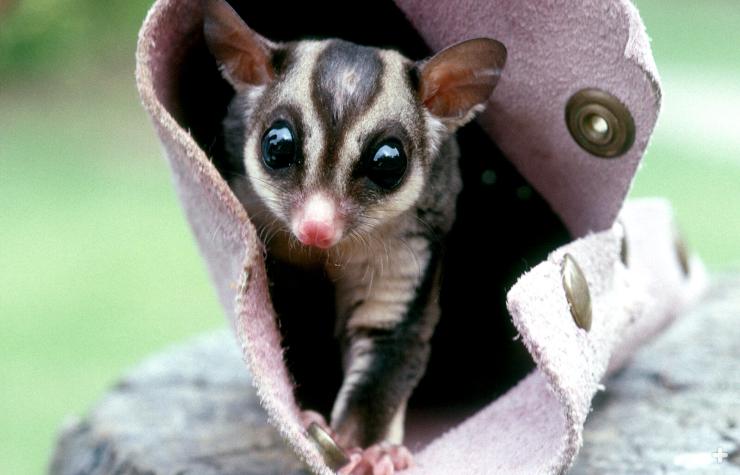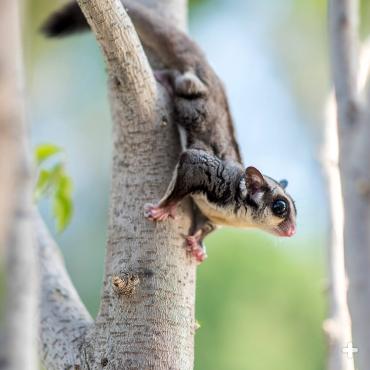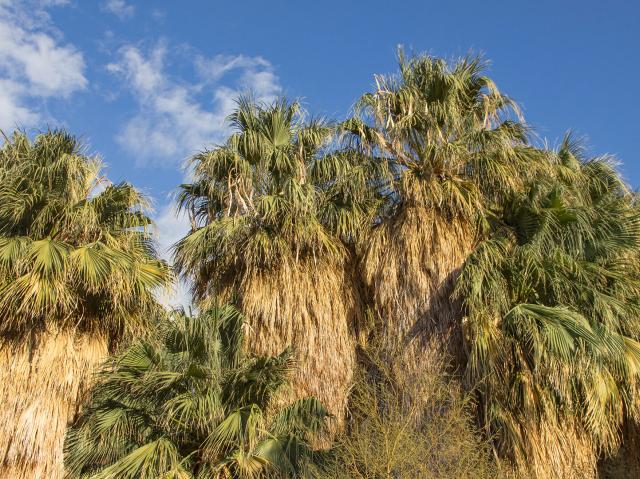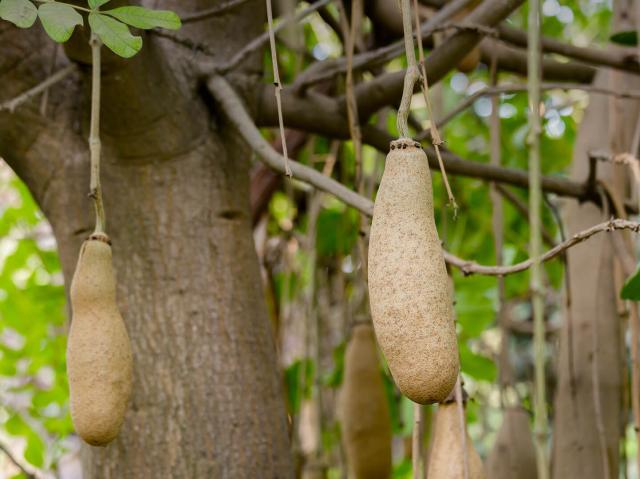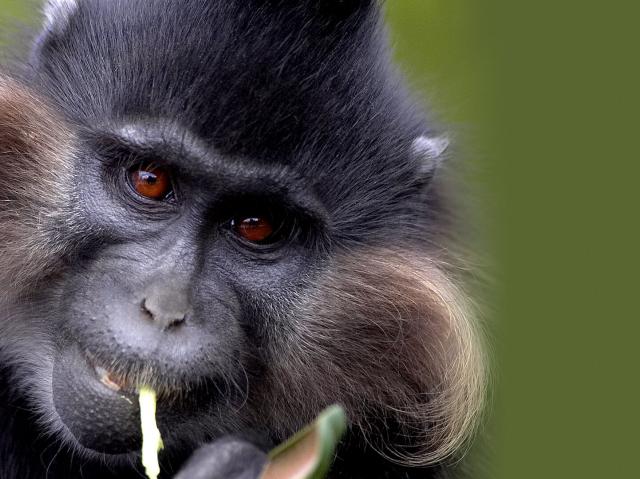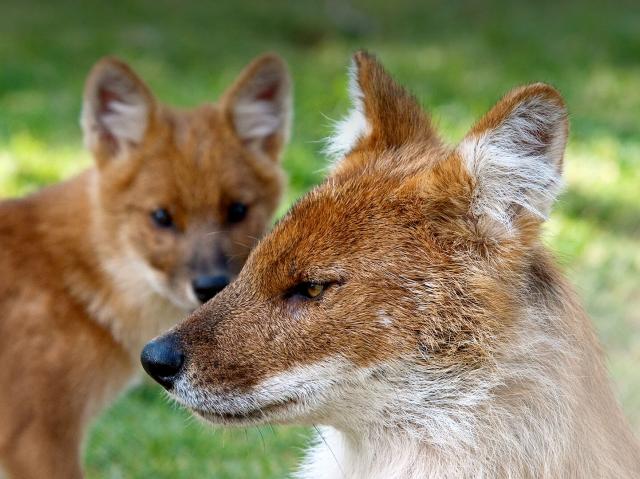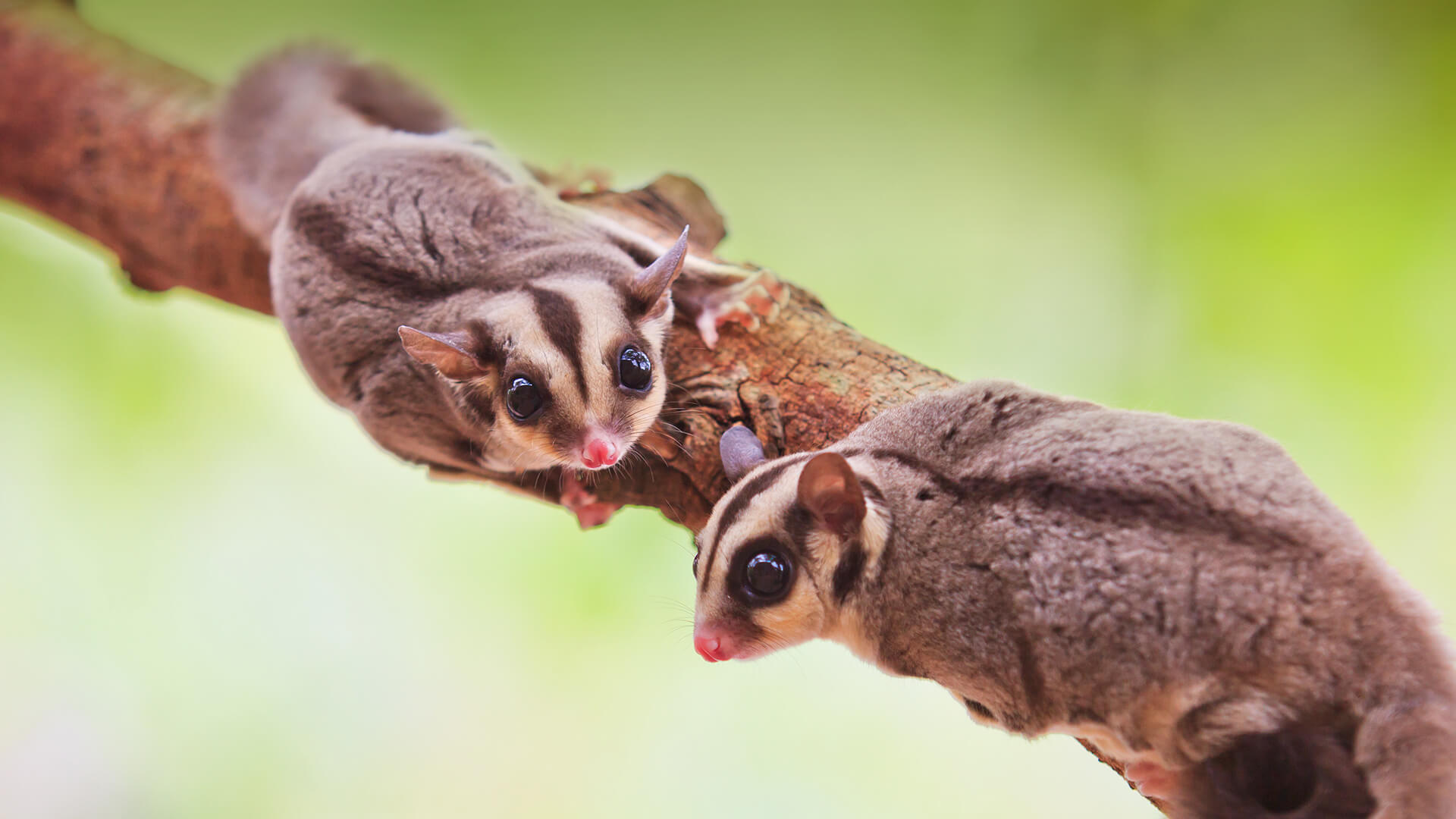
Sugar Glider

- Class: Mammalia
- Order: Diprotodontia
- Family: Petauridae
- Genus: Petaurus
- Species: breviceps

ABOUT
Sugar gliders are squirrel-sized arboreal marsupials that inhabit the forests of Australia and New Guinea. They are highly social, living in small colonies or family groups numbering up to seven adults and their offspring. Sugar gliders are largely nocturnal and rarely come to the ground, finding both shelter and food in the trees.
The sugar glider's main distinguishing feature is a soft membrane between its wrists and ankles called a patagium, which allows it to glide from tree to tree as though using a parachute. These “wrist-winged gliders” can float on air up to a distance nearly the width of a football field!
They are excellent “aviators,” thanks to their wide field of vision—and they can triangulate distances and glide ratios by bobbing their head before launch. Once airborne, they steer toward their target by tilting their hands and arms, adjusting the tension in their “wings,” and using their long, flat, bushy tail as a rudder.
While named for their penchant for eating forest sweets like acacia gum, eucalyptus sap, and flower nectar, sugar gliders are actually omnivorous opportunistic feeders, consuming both plant and animal matter. The little sugar glider’s menu choice has a dark side, though. Their appetite for the endangered swift parrot’s nestlings in Tasmania is a grave threat to the bird’s survival there.
Being pocket-sized with big eyes and having the unusual "superpower" of gliding makes this marsupial popular in the pet world. But wildlife—even adorable ones—typically do not make good household pets. They are long lived and require plenty of space and others of their own kind to thrive. It is illegal to own a pet sugar glider in the state of California.
Light as a feather. A sugar glider weighs 3 to 5 ounces (85 to 141 grams), about as much as a baseball, and sports short, gray fur, not unlike that of a koala. The belly fur is creamy white. It has dark rings around its big, black eyes, and a charcoal stripe running down the center of its face to its pink nose.
Its rudder-like tail is nearly as long as its 6-inch body and is somewhat prehensile, and is used to carry leaves to its cozy nest. The tail cannot support the sugar glider's body weight. In a healthy sugar glider, the tail is often 1.5 times as long as its body. The sugar glider has five digits on each foot, including a handy opposable toe on its hind feet that allows it a firm grip on branches or a tree trunk. They use their limbs, tail, and torso to control their “flight,” and gracefully land with all four feet splayed to grab the tree.
HABITAT AND DIET
Nice nest. Sugar gliders inhabit wooded areas with open forest. They are arboreal, finding safety, shelter, and food above the ground. They shelter by day in cozy leaf nests constructed in tree hollows. They mark and protect their territory, which can include over two acres of forested land. Urine and secretions from various glands make effective “fences.”
Nighty-night. Sugar gliders are nocturnal, snoozing through the day until night falls, then they begin using their leap-glide-grab means of getting food. During periods of frigid cold or unavailable food, sugar gliders may lapse into torpor for up to 16 hours per day to conserve energy.
Sweet and sour. Sugar gliders are opportunistic omnivores, with a diet that changes with the seasons. While they do have a “sweet tooth” for nectar, sap, and tree gums, they also consume lizards and small birds. In Tasmania, their penchant for swift parrot nestlings has landed this mammal on the endangered species list!
Superpowers against predators. This pint-sized nocturnal mammal can be preyed upon by owls and snakes, so it makes full use of its gliding capabilities, leaping from tree to tree for safety.
According to Behavior of Small Mammals by Teresa Bradley Bays, DVM, when frightened, “they will produce a white, oily secretion from their paracloacal glands, which has the odor of soured fruit. Sugar gliders will assume a defensive posture by standing on their hind legs with head extended, often with the mouth open. If really frightened, they may lie on their backs with their feet up in the air while vocalizing.” That should discourage even the hungriest predator!
FAMILY LIFE
Whaaaaat? This highly social, nocturnal creature has a complex chemical communication system based on scents produced by frontal, sternal, and urogenital glands of males and by pouch and urogenital glands of females. Each has his and her own signature scent, which enables others to recognize it. However, the dominant male also actively marks his group members with his saliva, and by using scent glands on his chest and forehead. That’s a sure way to tell if an individual belongs in the colony or not.
Sugar gliders also communicate using a wide variety of yapping, barking, buzzing, droning, hissing, and screaming sounds. One is called “crabbing,” which they make when frightened, threatened, or woken from a nap. They make a barking noise when communicating with other gliders (or you). A sugar glider may hiss, and the duration and context of the call mean different things, like acknowledging another glider or telling it to get out of the way. When contented, the glider may make a purring sound, which is softer than a cat’s purr.
Fuzzy family life. Sugar gliders nest in groups of up to seven adult males and females and their young, probably all related and descended from an original colonizing pair. Female sugar gliders have a pouch containing four teats, which a mother uses to raise one or two joeys. Youngsters often leave their natal group by 10 to 12 months of age. These highly social creatures live in trees, rarely touching the ground, and they groom each other—which not only keeps their fur clean, but also helps solidify relationships.
CONSERVATION
While sugar gliders are currently listed as being of “lower risk” to extinction, habitat loss is a chronic threat to many kinds of wildlife.
By supporting San Diego Zoo Wildlife Alliance, you are our ally in saving and protecting wildlife worldwide.
Life Span
4 to 5 years in the wilderness; up to 15 years in expert care
Young
Gestation: 16 days; develop another 60 to 70 days in the mother’s pouch
Number of young at birth: 1 or 2; age of maturity: 6 to 8 months
Size
Length: 4.7 to 12 inches (120 to 320 millimeters); tail 6 to 18 inches long (150 to 480 millimeters)
Weight: 3 to 5 ounces (79 to 160 grams)
Weight at birth: 2 to 3 grams
Fun Facts
Sugar gliders are one of five “lesser gliding possum” species.
Females can suckle joeys of different ages at the same time! Marsupial milk changes in composition as the little ones develop, and each nipple can produce nutrition for each stage of growth.
Their scientific name Petaurus breviceps most accurately translates to “short-headed springboard.”
Sugar gliders use their semi-prehensile tail to hold leaf matter while they scamper back to their nest.
That ankle-to-wrist membrane that enables them to glide is called a patagium.
A sugar glider’s glide can reach about 150 feet (over 45 meters).
Sugar gliders can leap out to catch flying insects midair.


